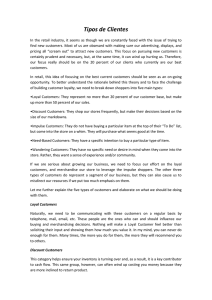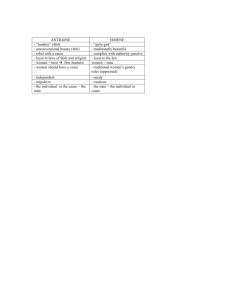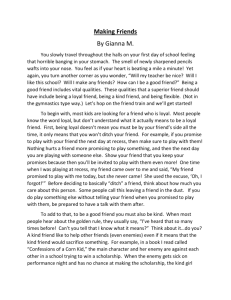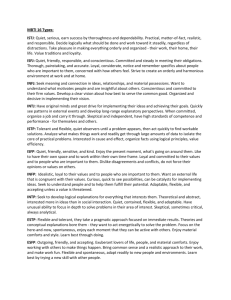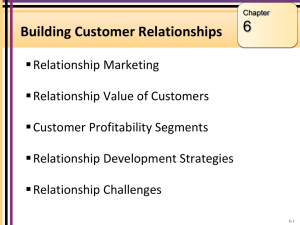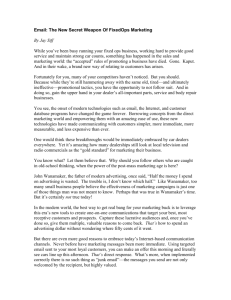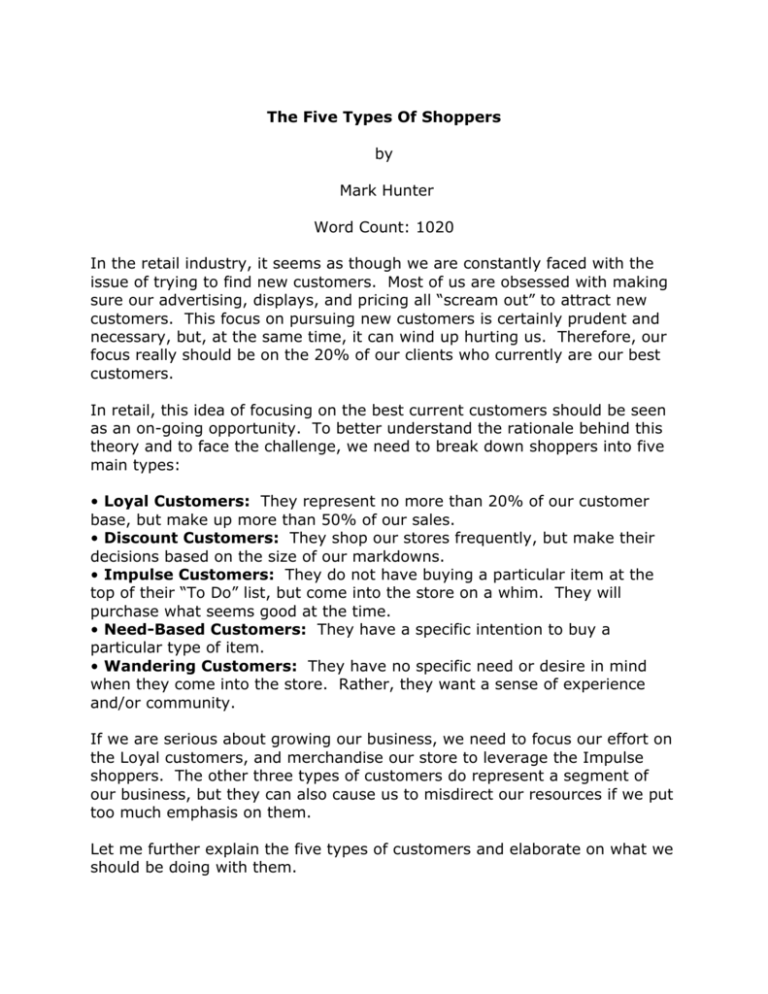
The Five Types Of Shoppers
by
Mark Hunter
Word Count: 1020
In the retail industry, it seems as though we are constantly faced with the
issue of trying to find new customers. Most of us are obsessed with making
sure our advertising, displays, and pricing all “scream out” to attract new
customers. This focus on pursuing new customers is certainly prudent and
necessary, but, at the same time, it can wind up hurting us. Therefore, our
focus really should be on the 20% of our clients who currently are our best
customers.
In retail, this idea of focusing on the best current customers should be seen
as an on-going opportunity. To better understand the rationale behind this
theory and to face the challenge, we need to break down shoppers into five
main types:
• Loyal Customers: They represent no more than 20% of our customer
base, but make up more than 50% of our sales.
• Discount Customers: They shop our stores frequently, but make their
decisions based on the size of our markdowns.
• Impulse Customers: They do not have buying a particular item at the
top of their “To Do” list, but come into the store on a whim. They will
purchase what seems good at the time.
• Need-Based Customers: They have a specific intention to buy a
particular type of item.
• Wandering Customers: They have no specific need or desire in mind
when they come into the store. Rather, they want a sense of experience
and/or community.
If we are serious about growing our business, we need to focus our effort on
the Loyal customers, and merchandise our store to leverage the Impulse
shoppers. The other three types of customers do represent a segment of
our business, but they can also cause us to misdirect our resources if we put
too much emphasis on them.
Let me further explain the five types of customers and elaborate on what we
should be doing with them.
Loyal Customers: Naturally, we need to be communicating with these
customers on a regular basis by telephone, mail, email, etc. These people
are the ones who can and should influence our buying and merchandising
decisions. Nothing will make a Loyal customer feel better than soliciting
their input and showing them how much you value it. In my mind, you can
never do enough for them. Many times, the more you do for them, the
more they will recommend you to others.
Discount Customers: This category helps ensure your inventory is turning
over and, as a result, it is a key contributor to cash flow. This same group,
however, can often wind up costing you money because they are more
inclined to return products.
Impulse Customers: Clearly, this is the segment of our clientele that we
all like to serve. There is nothing more exciting than assisting an Impulse
shopper and having them respond favorably to our recommendations. We
want to target our displays towards this group because they will provide us
with a significant amount of customer insight and knowledge.
Need-Based Customers: People in this category are driven by a specific
need. When they enter the store, they will look to see if they can have that
need filled quickly. If not, they will leave right away. They buy for a variety
of reasons such as a specific occasion, a specific need, or an absolute price
point. As difficult as it can be to satisfy these people, they can also become
Loyal customers if they are well taken care of. Salespeople may not find
them to be a lot of fun to serve, but, in the end, they can often represent
your greatest source of long-term growth.
It is important to remember that Need-Based customers can easily be lost to
Internet sales or a different retailer. To overcome this threat, positive
personal interaction is required, usually from one of your top salespeople. If
they are treated to a level of service not available from the web or another
retail location there is a very strong chance of making them Loyal
customers. For this reason, Need-Based customers offer the greatest longterm potential, surpassing even the Impulse segment.
Wandering Customers: For many stores, this is the largest segment in
terms of traffic, while, at the same time, they make up the smallest
percentage of sales. There is not a whole lot you can do about this group
because the number of Wanderers you have is driven more by your store
location than anything else.
Keep in mind, however, that although they may not represent a large
percentage of your immediate sales, they are a real voice for you in the
community. Many Wanderers shop merely for the interaction and
experience it provides them. Shopping is no different to them than it is for
another person to go to the gym on a regular basis. Since they are merely
looking for interaction, they are also very likely to communicate to others
the experience they had in the store. Therefore, although Wandering
customers cannot be ignored, the time spent with them needs to be
minimized.
Retail is an art, backed up by science. The science is the information we
have from financials to research data (the “backroom stuff”). The art is in
how we operate on the floor: our merchandising, our people, and,
ultimately, our customers. For all of us, the competitive pressure has never
been greater and it is only going to become more difficult.
To be successful, it will require patience and understanding in knowing our
customers and the behavior patterns that drive their decision-making
process. Using this understanding to help turn Discount, Impulse, NeedBased, and even Wandering Customers into Loyal ones will help grow our
business. At the same time, ensuring that our Loyal Customers have a
positive experience each time they enter our store will only serve to increase
our bottom-line profits.
Mark Hunter, "The Sales Hunter", helps companies identify better prospects,
close more sales, and profitably build more long-term customer
relationships. Sign up to receive free weekly “Sales Hunting Tip” email at
http://www.TheSalesHunter.com . Copyright© 2007, Mark Hunter. All rights
reserved. For information, contact FrogPond at 800.704.FROG(3764) or
email Susie@FrogPOnd.com; http://www.FrogPond.com

